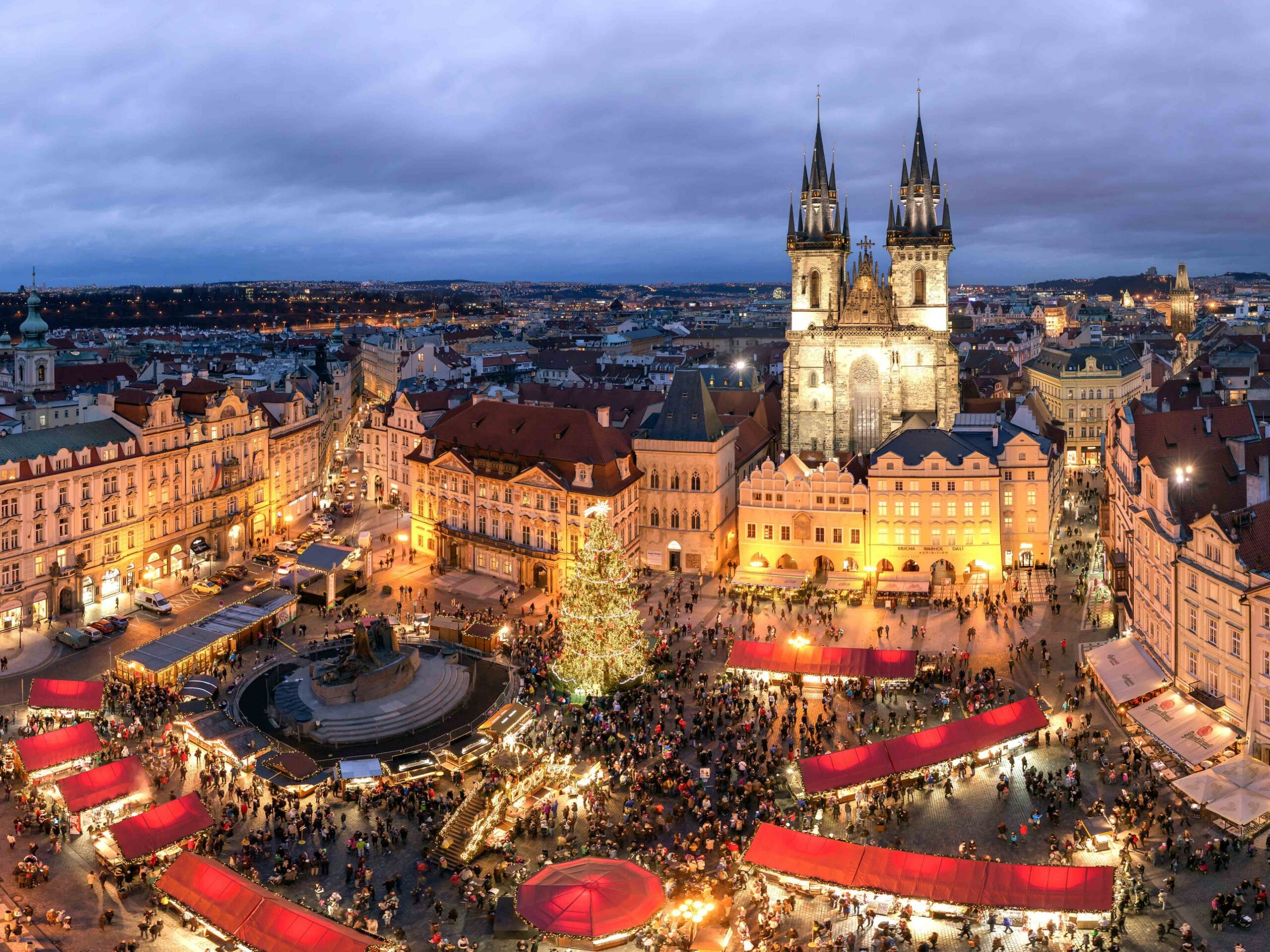Growing up, I had never been to a Christmas market. But, I don’t find it that surprising since I was born and raised in Southern California. But I got my first experience when I studied abroad in London. There were small Christmas markets set up all over the city, including South Bank and Hyde Park.
With Christmas being my favorite time of the year, walking around these little setups became one of my favorite holiday activities. Does your town put up a festive Christmas market in the heart of the city? Traditions vary everywhere you go but let’s look at the history of the conventional Christmas market.
Origins
Like much of Christianity, Christmas markets originated in old Europe. Over there, they are typically referred to as “Christkindlmarkt”, which translates directly to Christ Child Market.
These markets first appeared in Germany in the late Middle Ages (13th- 4th centuries) during the four weeks of Advent. In fact, the beginning of Advent is usually signaled by the opening of the Christmas market. In the ensuing centuries, started spreading all over Europe.
The first recorded Christmas market was Dresden’s Striezelmarkt in 1434 in Germany. Other earlier mentions around that time include markets in Vienna, Munich, Bautzen, Frankfurt, and Milan.
Christmas markets received a big boost in the 16th-century, when the teachings of German protestant reformer Martin Luther suggested that the birth of Christ was a more appropriate gift-giving day than other saints’ days. The churches – who originally encouraged markets to be held nearby to get more people to attend services – soon found themselves competing against the markets for their congregation. This was when the practice of Christmas gift-buying began to take-off, and festive markets have been popular ever since.
Today
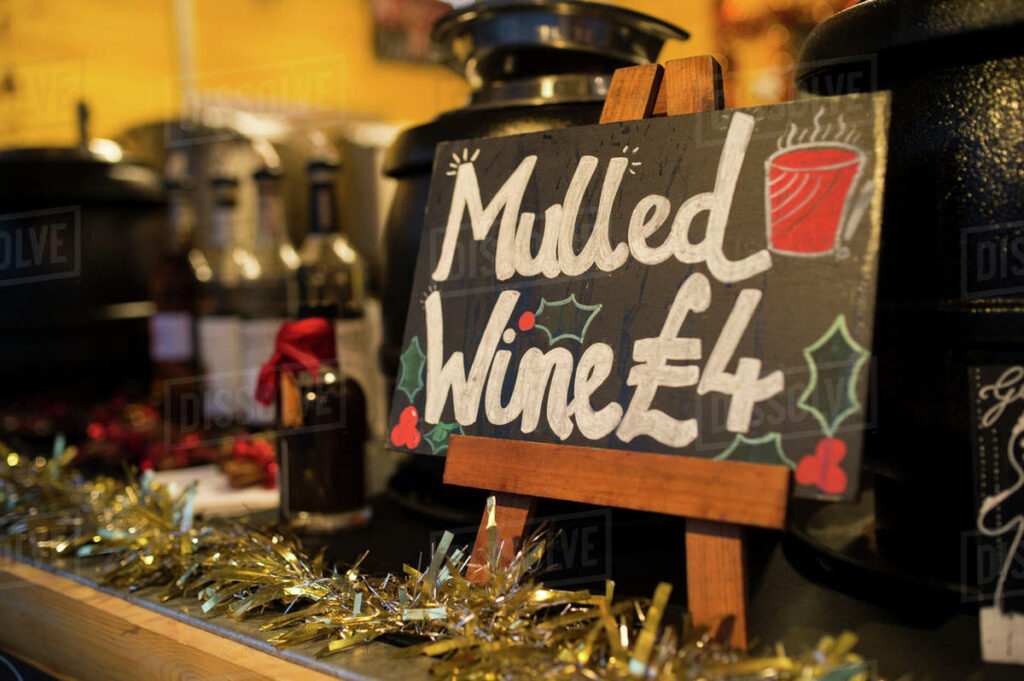
Traditionally held in the town square, the market offers food, drink and seasonal items for sale from open-air stalls, accompanied by traditional singing and dancing. These early markets started by only selling meat but evolved to provide other everyday purchases, and eventually seasonal treats, decorations and crafts – accompanied by singing and dancing.
The most common foods and beverages you can find include Gebranntemandeln (candied almonds), Lebkuchen and magenbrot (soft gingerbread), Christstollen (fruit bread), Bethmännchen (pastry with marzipan), Glühwein (mulled wine), and Eierpunsch (similar to egg nog).
No matter which Christmas market you visit, you’re bound to find tons of shops selling a variety of goods. But today, you’ll also be able to participate in different activities including ice skating, petting zoo, ferris wheels, and more.
Markets to Visit
Prague, Czech Republic: Old Town and Wenceslas Square
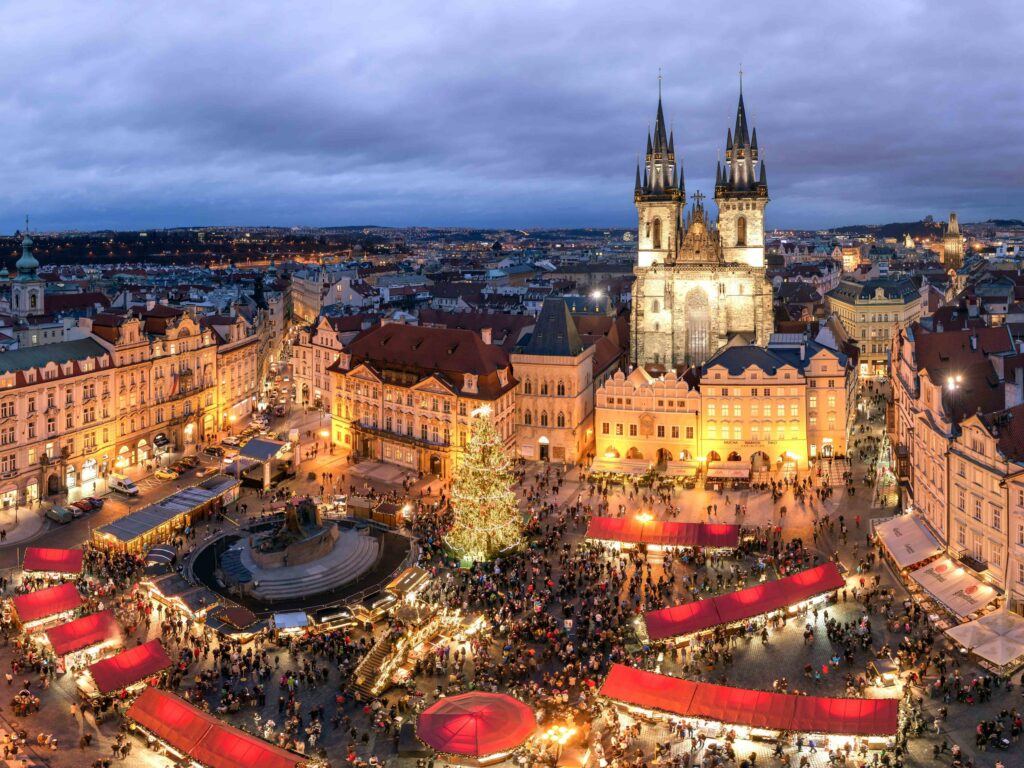
Just five minutes apart by foot, Prague’s Old Town and Wenceslas markets are the best in a city that already tops our list of places to spend Christmas. (Chalk it up to the Gothic architecture and mulled wine stalls.) Don’t miss the barbecued pork or trdelník, a hot, rolled pastry rolled in cinnamon and sugar and cooked over a grill.
Tallinn, Estonia: Tallinn Christmas Market
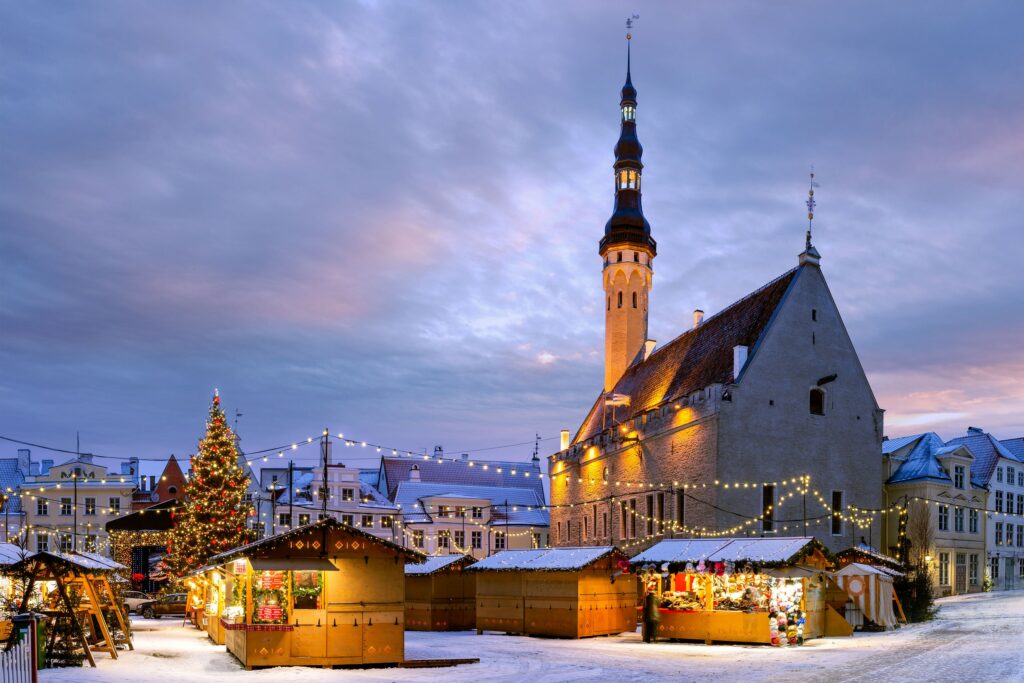
In addition to Estonian Christmas dishes like black pudding and sour cabbage, Tallinn’s market—which travelers dubbed the Best Christmas Market of 2019, according to European Best Destinations—also has a Santa who arrives by reindeer-pulled sleigh. The highlight, though, is its Christmas tree, which the city has been displaying in front of its town hall since 1441—making it the first Christmas tree to ever be displayed in Europe.
Cologne, Germany: Cologne Christmas Market
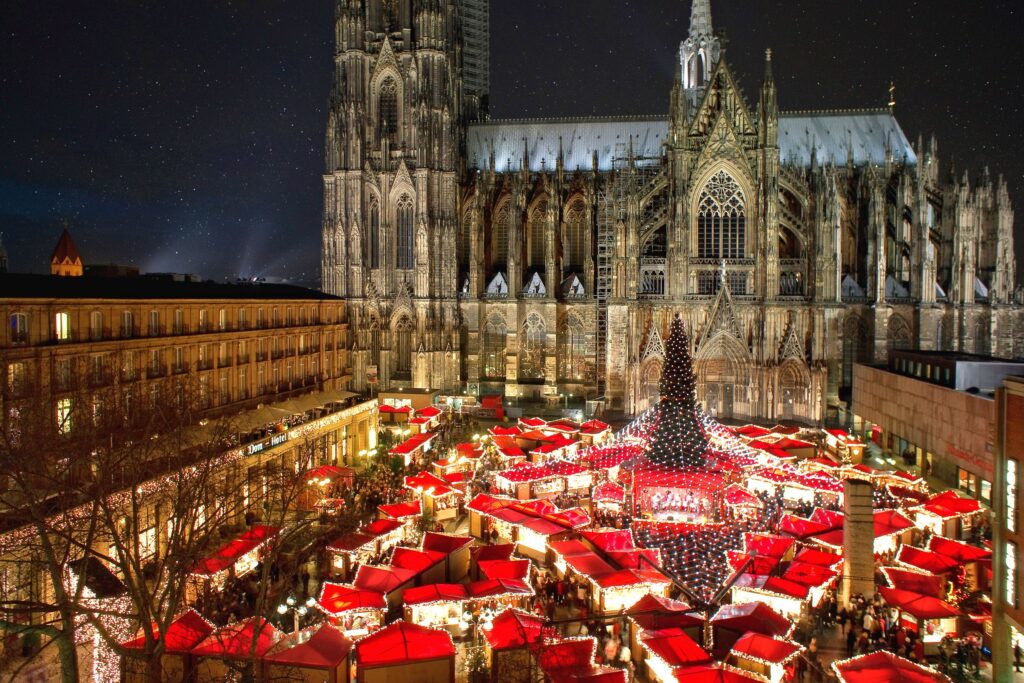
This market has everything you’d expect of a classic German spread: the glühwein, the crafts, the twinkling lights. One thing that stands out, though, is its entertainment—more than 100 stage performances throughout the festival, including Christmas swing music and gospel.
Dresden, Germany: Striezelmarkt
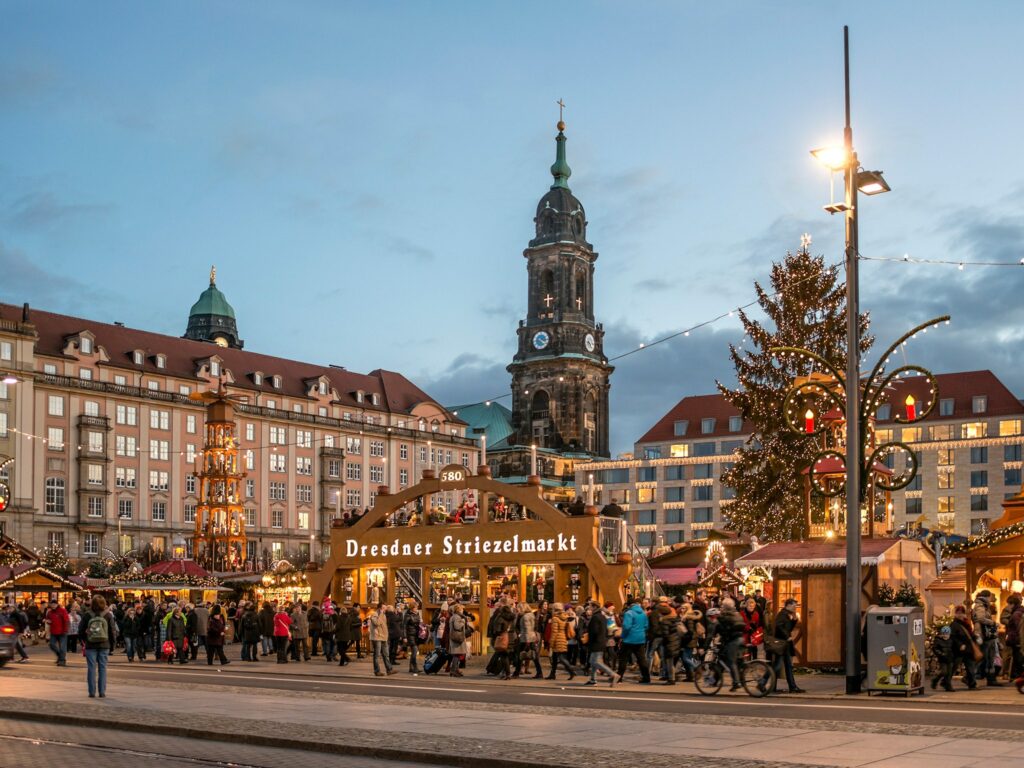
Founded as a one-day market in 1434, the Dresden Striezelmarkt is Germany’s oldest. The annual focal points here are typically the 45-foot-tall Christmas pyramid and the stollen, buttery fruitcake dusted with powdered sugar and packaged with a special seal depicting the city’s famous former king, August the Strong.
Strasbourg, France: Christkindesmäkir
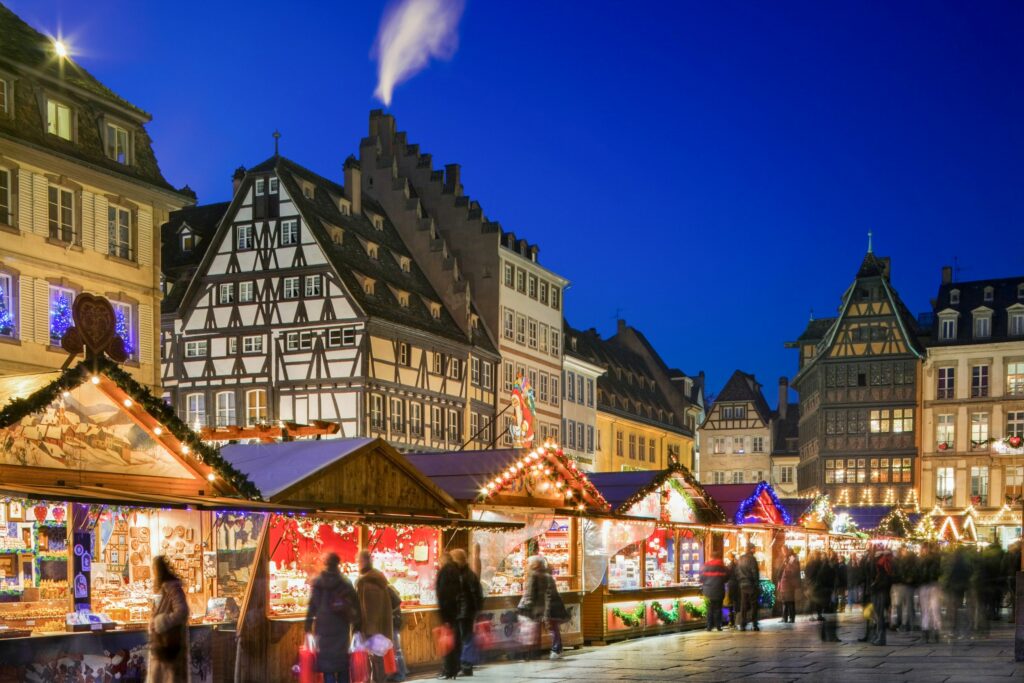
Strasbourg, a fairytale-like town in the Alsace region of France, becomes even more magical during the holiday season. Its Christkindesmäkir (the oldest Christmas market in France) attracts several million visitors each year, thanks to its charming wooden chalets, nightly concerts, and ice skating rink—not to mention all that foie gras and hot white wine. And don’t forget about the city’s other seasonal claim to fame: the Great Christmas Tree illuminated in the central square of Place Kléber.
